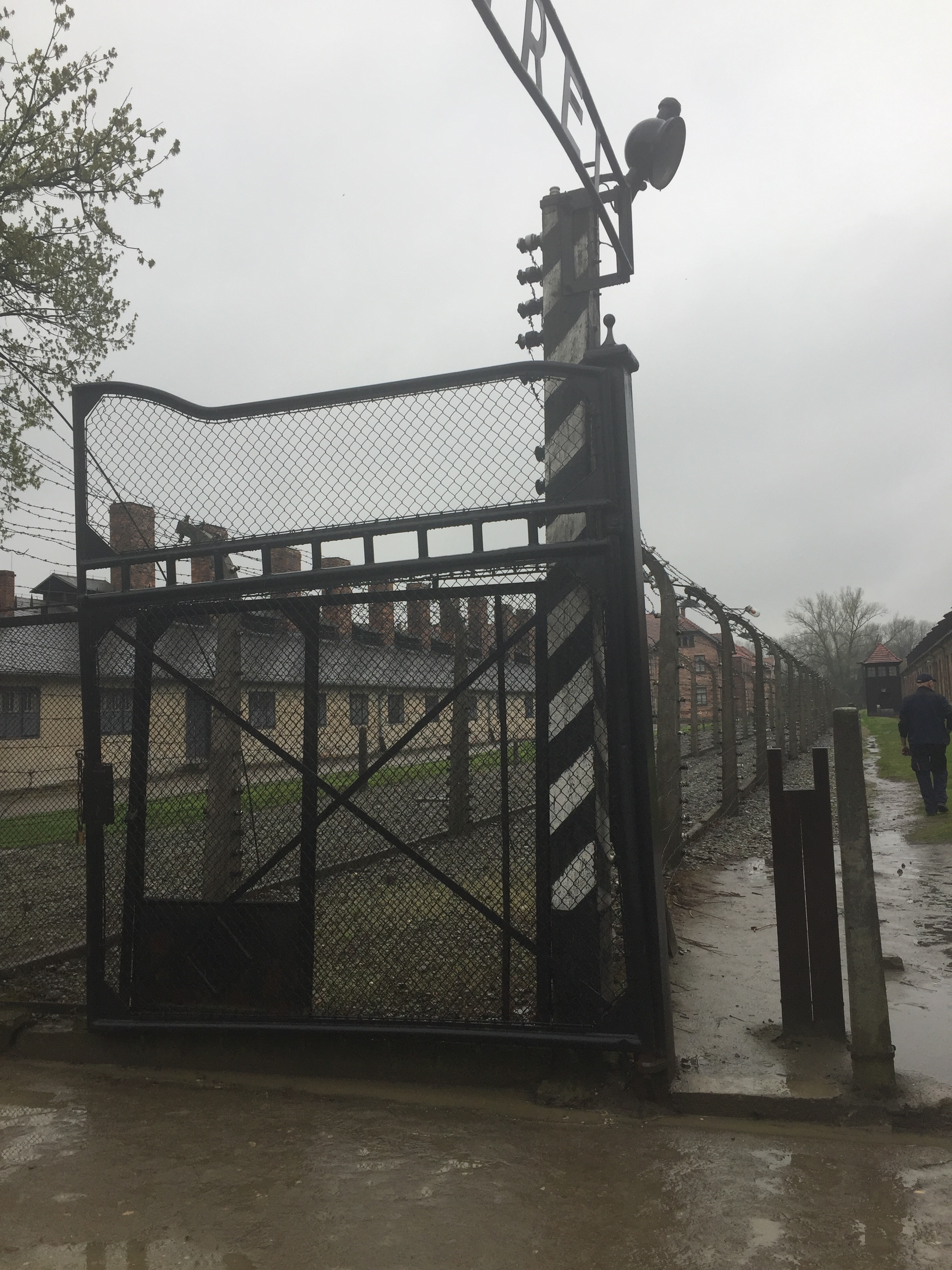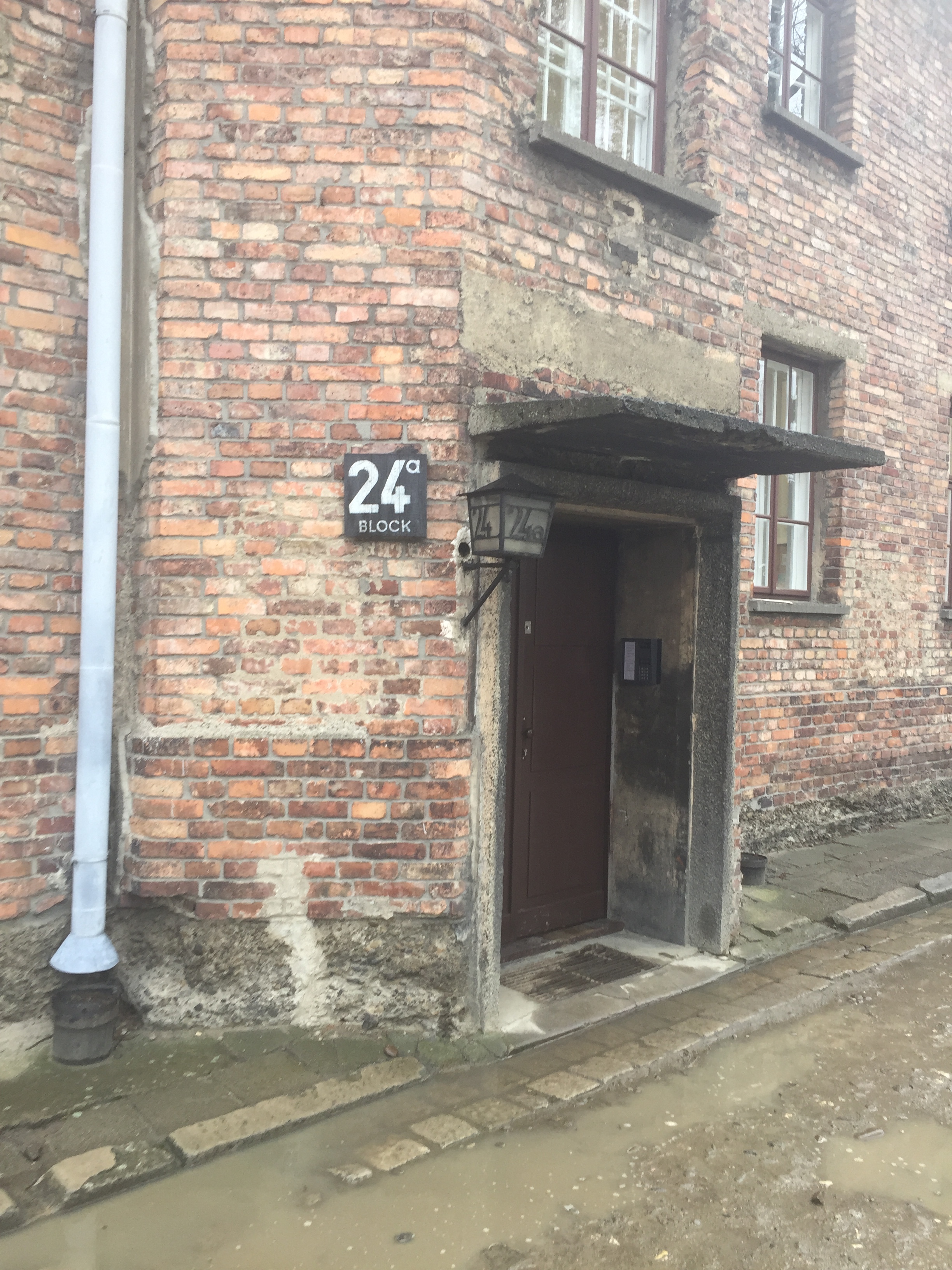Krakow main square
Krakow
Krakow first became the royal capital of Poland in 1083 --1569. In 1569 Poland and Lithuania were united as the “largest state in Europe”. However, in the 1700’s Russia, Prussia, and Austria repeatedly divided the polish territory between themselves and by 1795 Poland vanished. Only after WWI was the Polish state restored. But of course the Nazis attacked from the west and the Soviets invaded from the east in 1939. When WWII ended 6 million Poles died, including 3 million Jews. Then Poland was under the thumb of the Soviets for 40 years. In 1990 the Poles democratically elected their first President, Lech Walesa, and started to build a successful market economy.
Krakow miraculously escaped destruction in WWII, and is packed with historic buildings, markets, churches and an amazing Castle adjoined to a fantastic Cathedral. We saw all these great sites.
First day was free walking tour day starting at the Florian Gate and city wall defenses. The guide put on a pretty good show about the boiling oil, rocks, arrows and kill zones. We walked through the Main Market Square which is gigantic, much bigger than plazas we have seen in other famous cities. You do not realize how big the square is until you walk into then out of the Cloth Hall, which is a long gothic structure housing market stalls used by cloth sellers in the Middle Ages. You walk out to the other half of the square. We also saw the Archbishops Palace which is very important to the Polish people because it was once the residence of St. Pope Paul II.
We moved on to St. Mary’s Church. One of the most fun things was watching the bugler blare out his alarm tune from the tallest tower of the St. Mary’s. This is an hourly reenactment of the historic warning to the city in 1241 facing invasion by the Central Asian Tartars. Interestingly, the tribute stop on an odd half note. Some legends say the original bugler’s alarm was unexpectedly abbreviated by an arrow to his neck. If the currentbugler waves from the open window, it is good luck to those watching. We visited the beautiful interior of St. Mary’s the next day.
On our second day we returned to Wawel Castle and Wawel Cathedral, the symbol of Polish royalty. Unfortunately, no interior photos were allowed
The Wawel Castle is three stories tall with renaissance arches and large enclosed interior courtyard. There are available tours of both the Government State Rooms and the Royal Private Apartments which we took. The Government Rooms were the most decorated with elegant art, wall hangings and furniture of the time.
Maybe the most amazing treat was seeing a lesser known Leonardo Da Vinci’s painting titled “Lady with an Earmine”. This woman was much younger and more beautiful than Mona Lisa; This young woman was holding a mink and trying to hide a pregnancy with her arm resting under the mink and on here torso. The painting was bigger. The painter was really good too. Maybe Krakow actually has one over Paris and the Louvre.
Next we saw the Wawel Cathedral, which was the coronation and burial place of the Polish Royalty for 400 years. It is really spectacular and its center core is modeled after the Vatican’s St. Peter Basilica. Throughout the centuries various Royalty built on Chapels with tombs and and crypts to the basic church, so the exterior architecture has a variety of Baroque and Renaissance building styles; rather a mix- mash, that actually seems to work our grandly. The interior of the Cathedral and its side chapels is head turning. As well as the center core free standing alter, no one seems to us to have done a better job than the Poles with integrating massive dark wood carvings and furniture with marble sculptures and wall coverings of many colors. We were really surprised how inspiring it all was.
Auschwitz and Birkenau
This morning of our third day it was grey and dreary, with continuous drizzle of rain. This was the day we were going to visit Auschwitz and Birkenau, the notorious death camps run by the Nazis SS. When you first walk on these sites it just boggles the mind how large are these camps, surrounded by electrified barbed wire and guard towers. But after you walk through a barracks, then the “Extermination House”, then the “Property Reclamation House”, then “Block 11 Solitary Confinement Prison”, then finally “Crematorium #1”, you are just aghast. The display warehouses of shoes, spectacles, and finally stores of Human Hair make it impossible to ignore the cruelty. All visitors are silent and somber, and even older guys get teary eyed.
Today, we go on a more light hearted adventure. Today, we go subterranean 135 meters into the “Wieliczka Salt Mines”. Salt was known as “white gold” and considered valuable since ancient times. Roman soldiers were paid partly in “salt”, from which was derived the word “salary”. This excursion begins with about 150 steps down a rough lumber stairwell to the first level of the mines. Half our group was so slow and late, we thought they left the tour for above ground safety. The passageways are boxy, entirely carved through the salt, 4 shoulder’s wide, but then open into vast carved caves which were once gigantic salt deposits. Our guide is informed and mischievously funny about our future fate. We alternately walk on smooth salt floors, like concrete, or wood bridges and stairways. We descend to the visitor allowed second, then third level; the mine actually has nine levels, but is no longer operational (except for the secret government stuff that my imaginary friend told me about). There is gigantic structural bracing made of lumber and logs throughout the passages and in many of the tallest caverns. Special ventilation systems are operating so air is fresh and in certain areas saline lakes have been created to awe the crowd. It is all pretty cool. There are some areas that display salt sculptures, either historical or religious, and some panorama of working miners, all get mixed reviews. We enjoyed the experience.
After arriving back into Krakow’s main center square we took some quick side trips as we walked toward our Tram station. We entered St. Mary’s Church, where the day before we had heard the High Tower Bugler performing the historic “Hegnal” hourly warning call. We paid to get a close look at the huge Gothic “Altarpiece” carved of wood by the artist Veit Stoss and painted with gold. The Altarpiece opens like a book with 12 panels on the cover and then 6 panels inside that contain sculpted figures, all dealing with the life and suffering of St. Mary. The panel book is ceremonially opened and closed each day. The rest of the church is also spellbinding in its detail, color, and splendid stained glass windows. Another great religious building; as was the Wawel Cathedral.
Near the square we also ran in the open doors of the beautiful gothic St. Francis Church, the home of Pope John Paul II. The church features nouveau art in appropriate places. Also we saw the historic Romanesque Church of St.Andrew and the Jesuit Baroque Church of SS Paul and Peter. Each had certain individualized religious art that was exceptional. It is a habit now, if there is an open door to a church we stick our heads in to see if we will be surprised with beauty; we usually are.
We were a little apprehensive this morning. We decide to go to Schindler’s Factory Museum. It is highly rated. Again it deals with the Nazis occupation of Krakow in WWII and is staged in Schindler’s former enamel factory. You question how much of this civilian war tragedy you want to take in. In any event, we took our usual Tram # 13 across the Vistula river toward the Jewish Ghetto, jumped off , and then backtracked 5 minutes to Oskar Schindler’s Enamel Factory. The museum is rustic in its presentations. You feel the grit Krakow and its occupation during the 1939-1945 period the museum covers. The documentary films and interviews with the workers of Schindler were the highlights for us, but still depressing. We think it was worth our time.
FYI: We ate a late lunch at a “Milk Bar”, aka diner without booze historically subsidized by the socialist government. The food was hardy Polish fare with great taste at a low price. We had fish and Chips and Roasted pork with sourkraut. This diner was actually cutely decorated, not the organizational footprint of socialism we have seen in different cities. One other tourist patron said she had eaten here three times. For tourists that is unusual. Finished for the day, we walked in the rain through the town square to the Tram #13 station headed for home. Tomorrow, we leave for Warsaw, Poland.
















